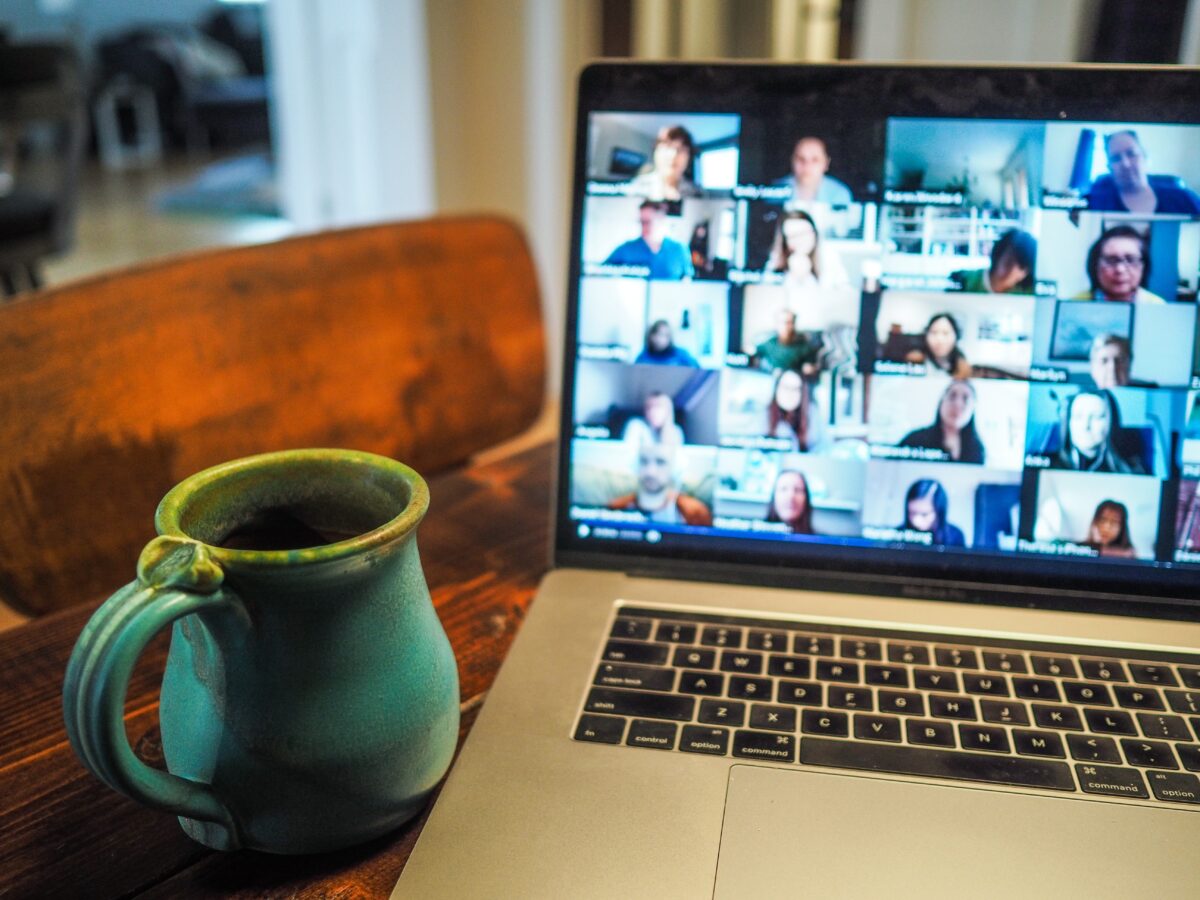The new way of working

Face masks, elbow bumps, QR codes in restaurants – most of the elements of the ‘new normal’ are happily receding into the realm of ‘odd things we did back then’. One aspect of our lives, however, seems to have undergone a permanent paradigm shift – our way of working.
I have long had the option of working from home when I need to, and I am well aware of the benefits: to wait in for a plumber without having to take the whole day off, to better balance the demands of parenting and work, or simply to make a personal appointment with a doctor or other professional outside of the peak times of evening and weekend. While many others longed to experience these benefits for themselves, for many employers it was complete anathema. In particular, for conservative institutions such as law firms it was deemed utterly impossible to arrange for employees to access the necessary data from home. During lockdown, these barriers magically melted away. Suddenly, employers discovered that it was actually feasible to arrange access to IT systems, and to carry out meetings online. They even found that it delivered cost savings, from running costs such as electricity and water, to infrastructure costs such as office space. With benefits to both sides, it is unsurprising that many workplaces are not returning to the old five days in the office, and are instead opting for ‘a new way of working’.
On the face of it, it seems to be a ‘win-win’. Employers save money, employees gain flexibility and claw back time otherwise spent commuting. Yet this happy picture ignores a number of potential problems.

Many colleagues of mine, who previously spent long hours travelling to and from meetings, wax lyrical about the efficiency of online meetings. It is undeniably beneficial that a group of, say, ten people spread around the country can meet for an hour to discuss their work, without all ten having had to spend time travelling to the meeting. All that time saved can be used for other work, other meetings. It also lowers the threshold for attending a meeting, making it far more feasible to get a group together for a discussion, even at short notice.
But this very ease is also a pitfall. If you are going to require people to travel across the country to a meeting, then you had better make sure the meeting is worth their while. On the other hand, if you can just drop into a call, then it doesn’t matter so much. Consequently, many online meetings are poorly organized and prepared. Increasingly, I find myself in meetings without an agenda, or where the organizer themself is absent, or where it turns out there is nothing to discuss – but this of course takes at least twenty minutes to ascertain. The low overhead of meetings also tempts people to pack them in ever tighter. Meetings are scheduled back-to-back, with people increasingly struggling to find time to grab a coffee or even go to the toilet. Given that online meetings have been shown to be more tiring than physical meetings, this is a recipe for burn-out.

Sitting in a completely different room to the rest of the meeting participants, with no fear that they will look over your shoulder, the potential for distraction is also immense. It is very tempting to quickly send a few emails, to start up a programming script you need to run, to make a few edits to a document, even to attend to your child or pet. The attention of the participants drifts away, and the meeting, supposedly so efficient, becomes totally ineffective. People react in a startled way to a question addressed to them, having clearly registered nothing of the discussion preceding it. One participant in a recent meeting I attended, having forgotten to mute his microphone, gave himself away completely. ‘Well, I’m actually in a meeting at the moment, but it’s alright, I only need to listen in, I don’t have to contribute’.
Like the increased efficiency for the employee, the cost savings for the employer are also not quite what they seem. On paper, it seems simple. Half the people are working from home, so you need half the office space. But add in to the mix that the people coming in to the office are also spending some of their time in online meetings, with their colleagues at home or with clients/external partners, and the footprint of an office worker increases significantly. They have their usual desk space in the office with their colleagues, but they also need a private, quiet space for online calls. And as online meetings proliferate, such spaces fill up quickly. The old allotment of meeting rooms is totally inadequate. I frequently see people wandering the hallways at work, earphones in, laptop or smartphone in hand, hunting for a place to conduct their call.

Another apparent benefit of the new way of working is that it allows each individual the freedom to choose what works best for them. This makes one huge assumption – that we each know what is best for us, and we choose that. Centuries of experience of human psychology, of people who smoke when they know it is killing them, people who pick up a cupcake when they know they need to lose weight, should show how tenuous this assumption is. In my team, we have a regular meeting in which we share the good and bad points of how our work is going. When one particular manager decided to enforce a minimum number of days in the office, one of the team members, who is quite introverted, listed ‘working from the office’ as a bad point. In a recent meeting, however, the same team member listed ‘working from the office’ as a good point. Having overcome the initial barrier and gotten used to coming into work again, he was now glad to spend more time with the team. Left to choose for himself, he would never have reached that point.
Also shaky is the assumption that people are left to choose freely. Many employers make the choice for their employees. I read a heartbreaking letter in a newspaper from a woman considering divorcing her husband, as her employer had made working from home mandatory, and the constant proximity to her home-working husband had put their relationship under too much stress. People can also be put under pressure from the home front. Whereas before, it was a given that a working adult would leave the home, now that is not the case. This makes it possible for their partner to put pressure on them to stay at home – to take on more childcare perhaps, or to remain under their partner’s watchful eye.

The emphasis on individual freedom also overlooks a big issue – individuals mostly work in teams. Whereas previously those in the team who preferred to work from home lost out, due to the expectation that they would come in to the office, now those who prefer to work together with their colleagues can end up missing out, if their colleagues choose for remote working. Even when all team members value being together in the office, the logistics have got a lot more complicated. In our team, we used to be all in the same room for at least four out of the five days, and we enjoyed working together. Now, each team member can choose a couple of days each week that they want to come to the office. Some have a fixed half-day when they look after the children. Some work in a particular project, so it’s handy to come in on a day when other project members – outside the immediate team – are present. Others prefer to avoid peak days on public transport. The end result is that we are hardly ever all in the same room anymore.
But who is where during the work day shouldn’t matter, should it, as we can work together online anyway? I think that long-term, an online work environment is very detrimental to relationships between people. All that overhead – the ‘unnecessary’ chit-chat between meetings, the breaks by the coffee machine, the walks to another part of the building – is actually essential. Now that interactions are stripped down to only what is necessary for work, it is so much easier for tension to build. People always end up disagreeing with each other at some point about how best to do the work. Sometimes, these discussions can get quite impassioned. But previously, when a meeting was over, you walked out of the meeting room together, and went to have lunch, or to get coffee, or to sit in the same office. Perhaps you talked it over. But mostly that wasn’t even necessary. Because the simple fact that you went to get coffee together, that you sat down in the same office and perhaps shared a joke – or a moan about the bad coffee – showed that you were still friendly. The work dispute was a difference of opinions, it wasn’t personal. Now, when a heated discussion ends with the zoom meeting closing, it is easy to believe that it is personal. That the other person is malicious, out to get you. Or thinks that you are stupid, doesn’t respect you. When there is no other interaction, then work disputes come to define the whole relationship.

These in-between, wasteful moments also give a window into what is happening with a colleague. A chance to find out that they are having a tough time with their new baby, they have just lost their parent, or they are an enthusiastic volunteer with a local charity. All these things can help to explain why they are late with responding to your email, why they were grumpy during the meeting, why they had to leave work early. All those reasons that you might otherwise fill in for yourself in your own way – they can’t be bothered to answer you, they are angry at something you did, they are lazy and uncommitted.
People are tribal creatures, they will help someone with whom they have a relationship sooner than someone with whom they don’t. I am a member of a European project. After a few months of regular online meetings, we had a physical meeting in Italy. We stood outside chatting during the breaks, sat together in restaurants, wandered down the streets discovering the city. I saw how passionate the other team members are about what they do, how interested they are in other people – including me. Since then, I am far more willing to help them when they ask for it. Because I know them.
Online simply doesn’t cut it for building a relationship. And the big risk now is that those who are physically present have a huge advantage over those who are not. Two classes are emerging in the workplace. This is particularly insidious as it can be influenced by budgetary considerations – and powerplay. I heard of a company in the Netherlands that needed to meet with a client in the UK, a meeting that had a managerial and a technical component. The manager was sent to the UK, the technical expert was told to join in online. A nice moneysaver – and a reinforcement of the status differences between management and technical personnel. Another example was of an online course in an international company. Online – except that all the UK participants sat in a room together, while the participants from other countries joined remotely. They had trouble following the discussions, as there was only one microphone in the UK room. The real low point came when the participants in the UK shared cake in celebration of a colleague’s birthday. What better way could you find of making all the others feel excluded – second class. When opportunities arise, for new work, for training, for promotion, who will be first in line?
Upfront, the new way of working can seem to save both time and money. But I worry about the long-term costs, as teams fail for the want of a little investment in relationships. As those who work from home – whether by choice or out of necessity – are relegated to the second division. As good employees move on elsewhere, in search of someone who values them for more than the minutes spent in an online meeting. And people suffer from the lack of a little inefficient human contact.